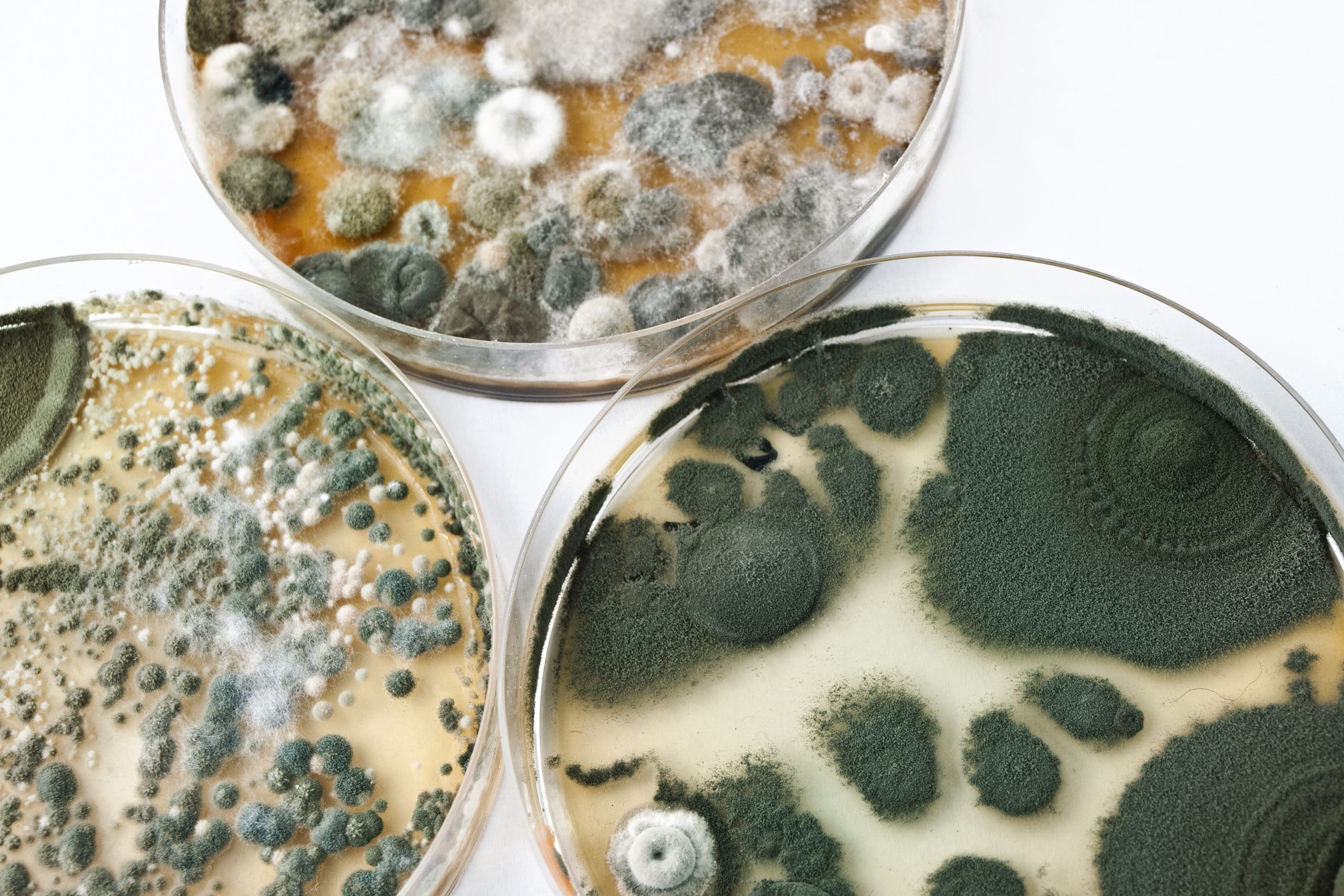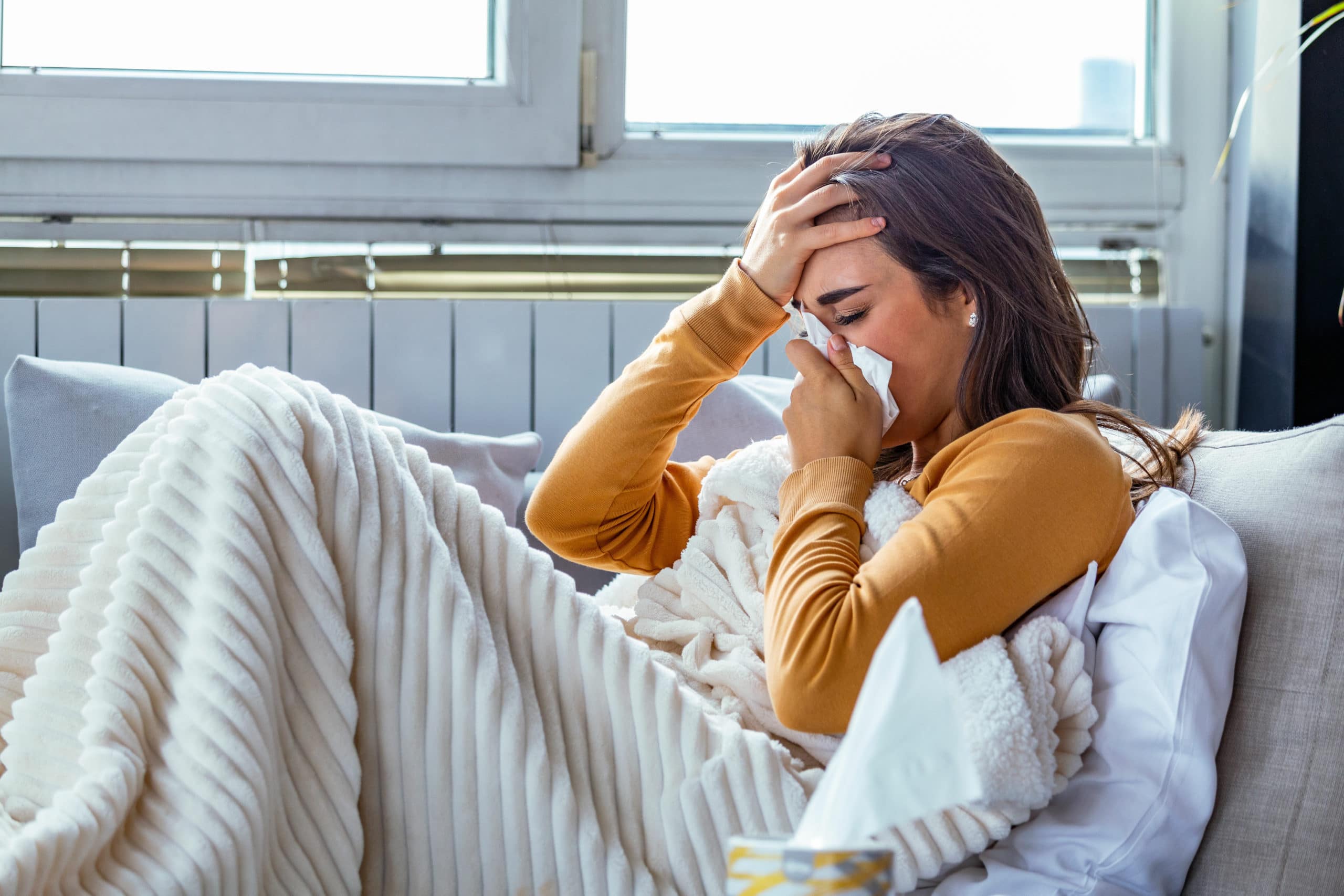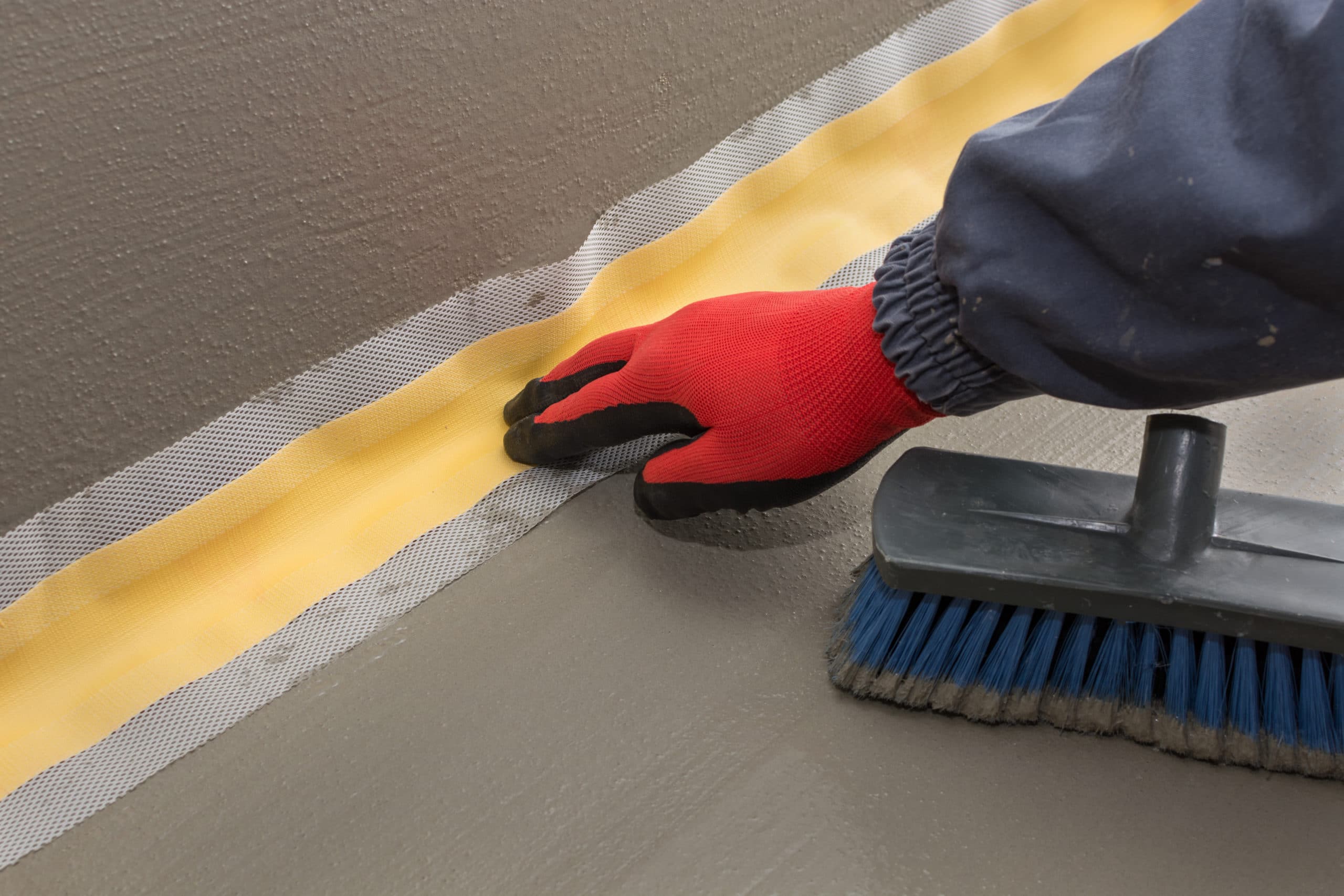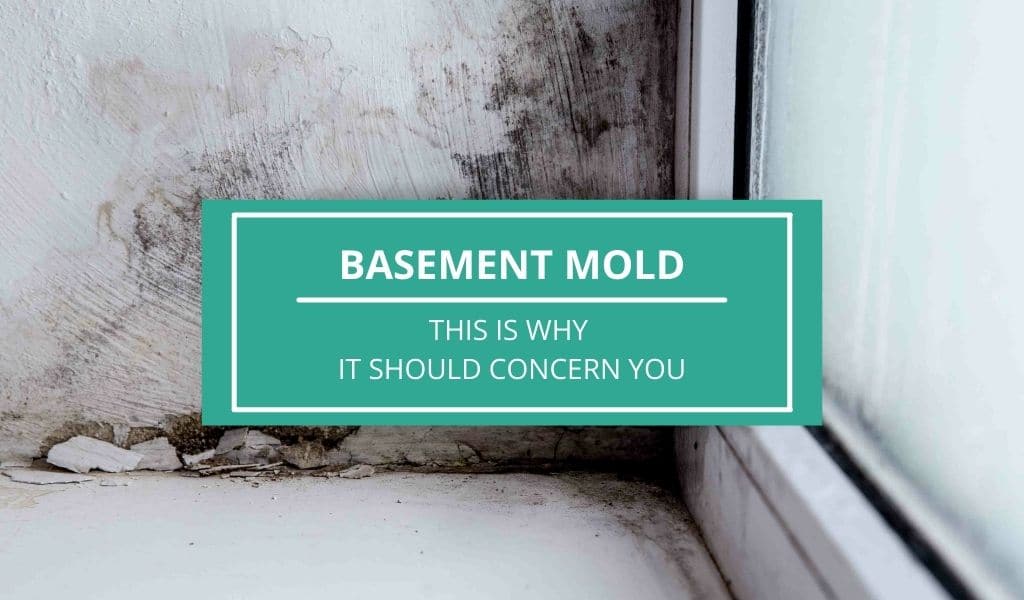There are more than 100,000 types of mold. Mold can thrive in a variety of places in your home, but the most common type of mold grows in damp and dark areas. This is why basements are common problem areas because they have the perfect combination of moisture and darkness that provides the environment for mold to thrive.
Thus, in this article, I've listed the most common types of mold that can be found in your basement, why this should concern you, how you can prevent it and ultimately, how to get rid of it.
Different Types of Mold
Several types of mold can grow together in the same area, and it is not always easy to tell one kind of mold from another by its outward appearance. However, the most frequently encountered types of indoor mold are:

Penicillium
Usually green, blue, or yellow in appearance, this type of mold is also one of the most common in homes. This mold thrives in carpets and insulation and is commonly found in humid places.
Aspergillus
Aspergillus usually appears as black or gray spots on concrete, masonry, and wood products. It can cause allergic reactions and irritate the eyes when it grows indoors. This type of mold does not do well with sunlight, so it makes its home in dark areas like attics, basements, and garages.
Stachybotrys
This type of mold is green or black in appearance and is often found on poorly dried building materials, especially when those materials have been disturbed somehow.
Cladosporium
This is a highly toxic mold. It produces an initial white fluffy growth on a material that has been in the dark for some time, and as the mold spreads, it appears more brownish than black in color. Cladosporium tends to be attracted to damp areas and is commonly found in bathrooms.
Why Basement Mold Should Concern You

Mold in your basement can cause health problems, and sometimes it can be severe for you and your family. Some types of mold release microscopic spores that can get into the air in your basement. When these spores are breathed in, they can cause allergic reactions or other respiratory problems such as asthma attacks, flu-like symptoms, or chronic sinus congestion.
For example, people with allergic reactions to mold can develop respiratory distress symptoms such as watery, itchy eyes and sneezing when exposed to mold spores. In addition,
Some types of molds produce toxic substances called mycotoxins, which can damage the lungs and immune system. People exposed to these toxins may experience nausea, vomiting, and fever.
Signs That You Have Mold In Your Basement
The signs of mold growth are not always obvious. There may be small amounts of mold you can't see with your naked eye, so even if the problem seems minor to you, it may be better to talk to a mold remediation service about it.
Moreover, it is important to note that finding mold in your basement doesn't necessarily mean that you have a leaky basement; it just means there is enough moisture for mold to grow. Mold will usually begin growing on damp or wet materials and then spread to other areas as the moisture spreads. Some of the most common signs that you have mold include:
Spots on Walls: Discolored patches on walls or floors, usually black or green in color, are a sure sign of mold. Mold will sometimes have a distinctive musty smell, too.
Outside Mold: Outdoor mold can blow in through cracks or windows and cause problems where it lands. When the problem is outdoors, you may not even realize there are any indoor air quality issues.
Basement Floods: The most common cause of mold growth in your basement is a flood due to leaking water. This will usually leave damp areas that are perfect for mold growth.
Preventing Mold From Growing In Your Basement
Some degree of mold in your home is inevitable, particularly in basement areas. But most of the time, you can prevent significant mold growth by taking the following precautions:
Lower humidity levels
Keeping the humidity level in your basement at a reasonable level and using a dehumidifier is the best way to eliminate mold from growing. A dehumidifier can help keep moisture levels between 50% – 60%.
Proper ventilation
Provide adequate ventilation (including fresh air) throughout your basement by keeping windows open whenever possible, even when you aren't home. (Related: Do Air Purifiers Help With Mold?) You could also mount an exhaust fan over a stove or other appliance if they produce moisture while operating.
Another option is to install a whole-house fan that will bring in cool outdoor air to help keep the humidity down around appliances such as washers and dryers, dishwashers, refrigerators, and more.
Drying wet materials
After you clean up a flood or leak, remove and dry any damp or wet items. Wash hard surfaces with detergent and rinse thoroughly to remove all traces of soap. Then allow them to air-dry completely before using them again. Mold will usually grow on any surface that is left damp for an extended period.
Keep your basement clean and dry
Regularly cleaning your basement will help to prevent a mold problem. First, ensure you dry anything that gets wet, including spills of food, juices, or water from washing dishes. Also, make sure the floor is kept clear of clutter and doesn't get covered in dust bunnies or dirt. Keeping it clutter-free and clean will help to prevent any moisture from building up.
Check your home for mold regularly
Watch out for signs of mold, such as discolored spots on walls. And if you suspect that you have a problem, call a professional experienced in dealing with basement water leaks and mold remediation to assess the situation. Most mold remediation services have a free phone consultation, so you can find out if they can help and what it will cost without any obligation.
Take precautions against future leaks
Once the mold has been cleaned up and removed from your basement area and any affected building materials, you will still need to work hard to prevent future leakage. One of the best ways is to use waterproof membranes on walls that are next to damp areas such as a ground floor or lower level. Doing so will help to prevent water from seeping through into your basement area.

A few other things you can do include:
- Fit outlet gaskets closely against outlets and switches, so they are airtight.
- Replace damaged or rotting flooring and trim, particularly near exterior walls, which may not be waterproofed.
- Check and reseal exterior drains.
- Ensure all flashing, guttering, and downpipes are covered with water-resistant sealants to help prevent leaks and block moisture from getting through to the side of your home.
What To Do If You Find Mold In Your Basement
If you find mold or signs of hidden mold in your basement, you should immediately take these steps to begin remediation:
Step 1
Use protective gear
First, be sure to wear a mask with goggles for eye protection while cleaning up moldy areas. Second, don't wear clothing that may be contaminated by mold when you are doing the cleaning. Instead, wear disposable coveralls, gloves, and shoes to keep them from contaminating your regular clothes. This is particularly important if you have children or people in your family who are highly sensitive to mold.
Step 2
Clean the affected areas
Damp-clean all affected materials. You will need to remove all moldy, damaged, or stained materials that show signs of water damage and could still be contaminated with mold spores. This is very important to do in order to prevent the spread of mold in your home.
Remove all items from the area you will be cleaning, if possible. Then seal off the rest of the room to contain contamination to your work area only. This will help to prevent any mold spores from spreading to other parts of the building. Then, if possible, shut off any heating or cooling systems, so they don't continue to circulate contaminated air throughout your home.
Wet moldy items with a water and detergent solution and scrub them with a stiff brush to remove the mold. Then rinse items well, so you don't spread any mold spores around your home.
Try not to use a vacuum cleaner or dustpan and brush inside your home while cleaning up mold in your basement area. These items will stir up mold spores and make it easier for them to become airborne and spread further around the house. You can use a HEPA-filtered vacuum for mold removal, but this is ineffective if the water damage has caused structural components such as floor joists or subfloors to rot, so professional restoration is recommended in those instances.
Step 3
Dispose of affected items properly
Prepare to dispose of damaged items, but before you do, be sure to test small samples in an inconspicuous place for further signs of mold contamination as it is possible that some mold was not visible. If you find any signs of continuing contamination, do not dispose of these materials until you have cleaned and dried them as well as you can.
Your items may need to be treated on-site in a specialized containment vessel before they can be safely disposed of, which will depend on the type of product it is.
What NOT To Do When Cleaning Up Water Damage And Mold
There are certain things you need to avoid doing to prevent the problem from getting worse. These include:
Don't dry things in direct sunlight. This will only cause more damage and won't achieve anything because the water won't dry out completely. Sunlight can also fade or discolor certain items if they get too hot.
Don't use bleach on mold, as this is largely a myth and could even make matters worse. Bleach simply doesn't kill mold effectively enough to be worth the risk, particularly if you have a lot of water damage.
Don't use abrasive materials like steel wool. This will just spread the mold around or even break it into tiny particles, which could linger in your air ducts and other places.
Don't touch mold with your bare hands. There are special products designed to kill the mold and prevent it from spreading further, but don't try home remedies or over-the-counter solutions that aren't approved by the Environmental Protection Agency (EPA).
When Should You Get Professional Help?
As mentioned above, having a professional inspect your home is the best way to find out how serious your mold problem is. And in severe cases that are caused by a disaster or other emergencies, such as flooding or sewage backup, immediate help may be necessary.
If you see mold growing on anything inside your house (other than food), you can first try to clean it up yourself using the steps outlined above. But if you can't remove it or the problem is severe, don't hesitate to call in a professional for help. Certified mold inspectors and remediation contractors have been specifically trained to provide safe and effective assessment and cleanup services in homes where mold has taken hold.

